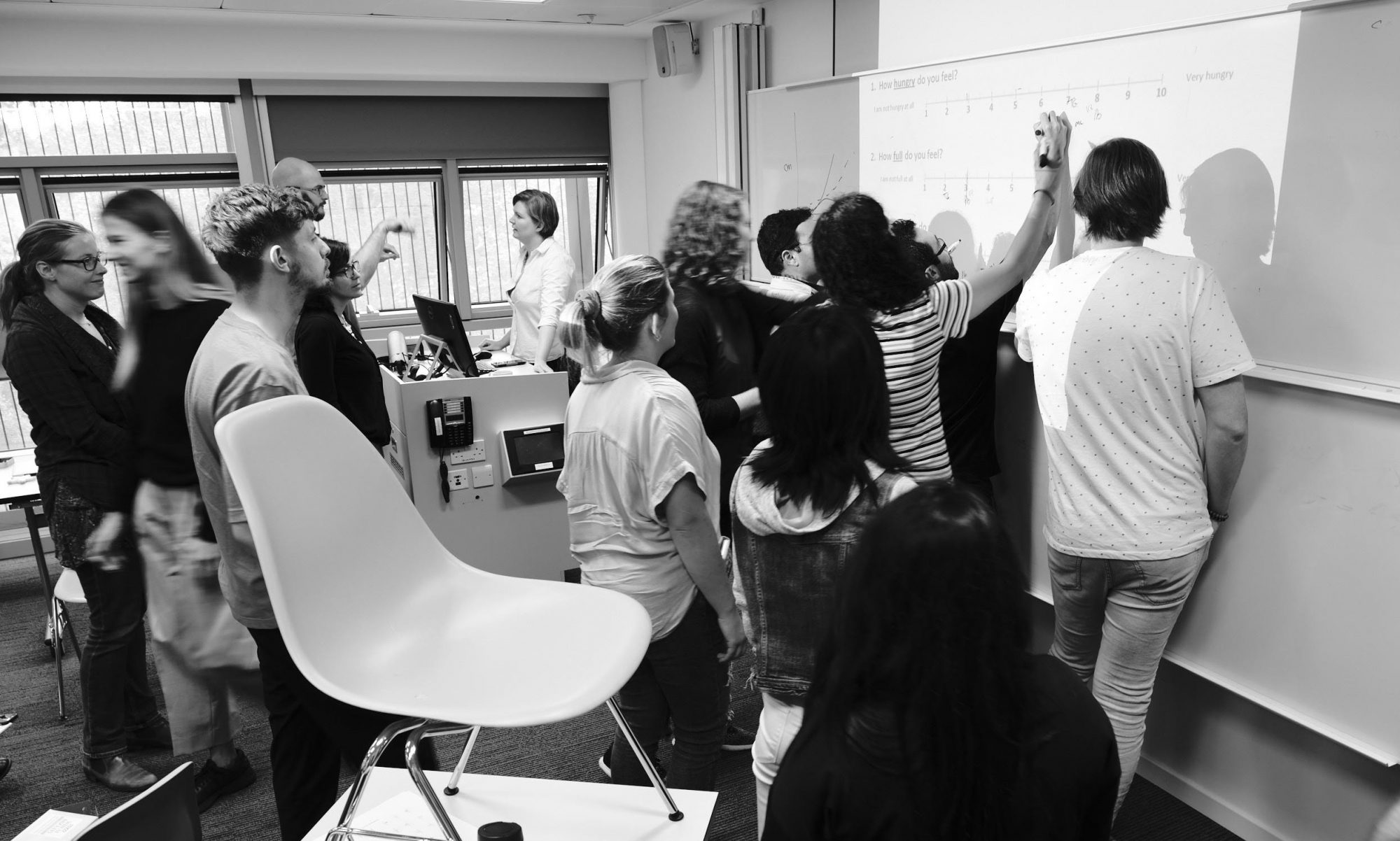While variety is the spice of life, it’s pretty typical to run the same strength work for weeks at a time – that we’re exploring many types of movements is just that: it’s an exploration, a sampler, so that in these 6 weeks you get experience of what the different kinds of strength work options feel like to help you decide when to use them.
Protocol – Week 4: pick two blocks to do complementary IsoLaterals
For your first two blocks this week explore isolaterals – of a pull in one block and a push in the other.
Keep your third block BILATERAL with two moves that fill in anything missing from those first two blocks.
For example:

First BLOCK -isolateral – Lower Body PUSH is a step up where move A is left side and move B is right side
SECOND BLOCK -isolateral too is a lower body Pull where move A is single leg glute raise on the left and move B is the single leg glute raise on the right
THIRD block as a BILATERAL focus takes care of the two

missing bits: upper body pull and upper body push
MOVE A is an upper body pull like a door towel pull MOVE B is an elevated push up
YOU CAN CHOOSE whatever moves you wish that fit the pattern of Pull/Push, Upper/Lower with two blocks isolateral and one block bilateral – make first two blocks isolaterals; last block bilaterals.
NOTE – PACE YOURSELF – Monday especially as you go through the routine for the first time – go a little slower or pause a little longer between reps and sets to find out what 3 blocks feels like.
BACKGROUND – The strengths of these approaches
Week three we stuck with BILATERAL push/pulls (upper lower). The bilateral approach lets you focus on raw strength and power – as we discussed it takes out the balance challenges and the load challenges of working one limb or side of the body at a time. That more balanced posture lets you really focus on moving the load with everything you’ve got.
Bilateral Focus/Power
in gyms, you’ll often notice there are machines for managing the movement of the weights – these reduce the need not only for balance but much in the way of coordination: you just push or pull and can use the machine itself (such as grabbing handles fiercely while pressing a load with your legs). These become popular because you can certainly move more weight, with less skill, using these approaches. That’s not (necessarily) bad – it depends on your focus. Isolaterals – Unilateral and Ipsilateral
Coordinating Strength: side work

Isolateral work means that you’re working one side of the body at a time; unilateral is often used interchangeably with isolateral as it fits so nicely with “bi” lateral. Within isolateral, we can also talk about ipsilateral and contralateral.
Running is an example of contra-lateral: where the opposite upper is working with the opposite side lower.

The step up is an example of ipsilateral work – as you work one side of the body at a time – if you really want to work the whole of that side rather than just the lower body you can also keep that side’s arm elevated to add load to the upper body (hard to keep that arm up after a few reps). time – if you really want to work the whole of that side rather than just the lower body you can also keep that side’s arm elevated to add load to the upper body (hard to keep that arm up after a few reps).

Contralateral Variations of Isolateral Movements You can also do something like the bulgarian split squat where your working leg is one side and you add load to the other (for example holding your arm up on the left side while working the right leg).
As Human Beings – Ipsilateral work is more what our daily lives are – we reach with one arm for a box on a shelf – we stir a pot with one hand – we walk up stairs alternating legs – we walk with contralateral movement. So learning how to strengthen these areas in these terms is very helpful – including to see where we may be weaker/or stronger and how to balance ourselves and our capacities.
It’s all Good
The key thing here is that each week you’re building up capacity as well as experience – with these tasters of types of movements using these principles:
1. pulls, pushes,
2. upper, lower,
3. front, back
4. and now side to side.
